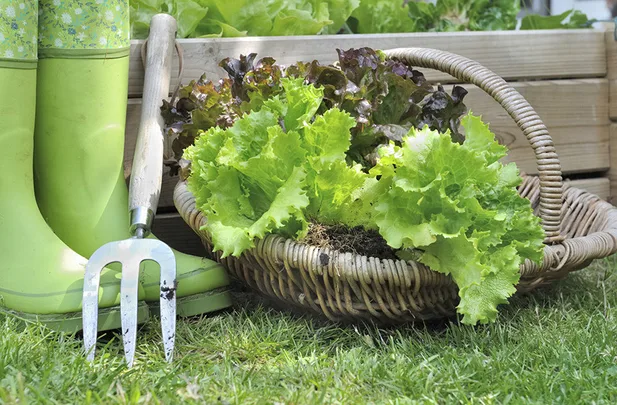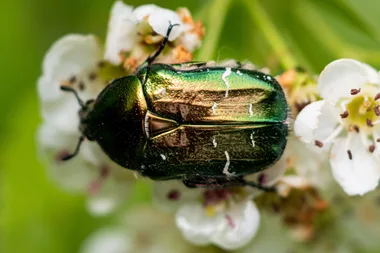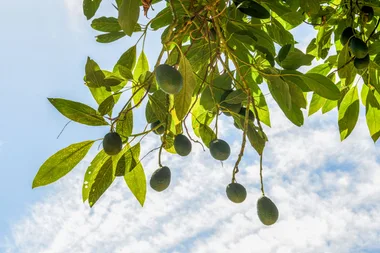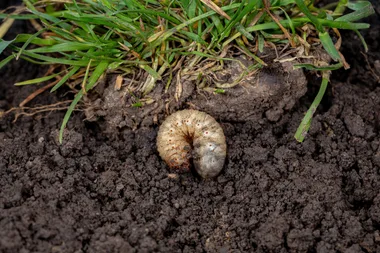
Lettuce
‘Oak Leaf’ or ‘Lollo Rossa’: Pretty green or bronze leaves that look gorgeous in the salad bowl, and taste great, too. Harvest the outer leaves and allow the centre of the plant to continue producing. Plant another batch every six weeks.

Dwarf beans
‘Tendergreen’ or ‘Brown Beauty’:Easy to grow non-climbing bean varieties. Pick the tender young beans regularly as this encourages the plant to produce more. First picking in only eight weeks.

Carrot
‘Thumbelina’: Crunchy bite-sized globes of goodness that are quick to mature. Carrot leaves are also edible, so chop them into the salad bowl, or steam your carrots leaves and all. Ready to pull from nine weeks.

Pak choy
Tasty Asian greens that are perfect for salads, stir-fries and steaming. If flowers are produced, you can eat these, too (but flowering means the plant is finished). Delicious, nutritious and easy to grow. Start planting new batches every two to three weeks.

Pea shoots
‘Oregon Giant’ or ‘Sugar Snap’: While pea pods will take eight to 10 weeks to develop, the leafy pea shoots and tendrils can be picked and eaten anytime after a month. Wonderful flavour, either raw in a salad, folded into an omelette at the last minute, or tossed into a stir-fry.

Kale
‘Cavallo Nero’, ‘Red Russian’ or ‘Scotch Curled’: Fashionable and nutritious, kale is a cabbage cousin but much quicker to crop. Eat raw, steamed or fried. Pick outer leaves for continual cropping over many months. Protect from caterpillars by handpicking or netting your plants. Ready to eat in five weeks.

Rocket
Fast? Why do you think it’s called “rocket”? This is a wildly popular, spicy-tasting leafy salad green. Grow it from seed and start picking in four weeks. Sow more seeds every four weeks for a constant supply of fresh, young leaves. As the best-tasting leaves are the young ones, pull out an old batch when a new batch is ready.

Radish
‘French Breakfast’, ‘Cherry Belle’: Hot and spicy, and great in salads. It also adds crunch to the antipasto plate. Can be added to soups, stews and roasts. Ready to eat in four weeks.

Shallots
‘Evergreen Bunching’: You can pick the leaves and leave the base of the stem to regrow for many months of harvesting, or pull out whole as you want them. You can even plant leftover shop-bought shallots.Ready to eat in eight weeks

Tatsoi
Tasty Asian greens for salads, stir-fries, and steaming. If flowers are produced, you can eat these too. Delicious and nutritious. Ready to eat in four weeks.

Turnip
‘Tokyo Cross’: Tender, juicy roots, for stews, roasting or eating raw. Can be pulled at any stage from golf-ball size to a 15cm globe. Ready to eat in eight weeks.

Mizuna
Ferny looking leaves that add a nutty flavour to salads. Also great added to soups or stir-fries and as a burger or sandwich garnish. Ready in four weeks.

Silverbeet
‘Rainbow Chard’: Lush foliage rich in iron and vitamins, it can be eaten raw in salads or cooked. Pick outer leaves and the centre of the plant will continue to produce leaves for 12 months or more. ‘Rainbow Chard’ has colourful, edible stems. Ready to eat in six to eight weeks.

Microgreens
Eaten as sweet, tender seedlings, tasty, nutritious microgreens are one of the speediest crops of all. Sprinkle them onto a salad, use as a garnish on soups, or try an egg and microgreens sandwich!
How to grow microgreens:
Rocket, mustard, cress and kale are all suitable. Sow seeds thickly in a shallow pot of seed-raising mix. A takeaway container with drainage holes punched in the base is ideal. Lightly cover the seed with a thin layer of the seed-raising mix and gently water until the soil is thoroughly moistened. Place the container in a well-lit position, a sunny windowsill is ideal. Seedlings will start to appear within two to seven days. To harvest, snip off at ground level with scissors when plants are 3cm tall. Sow another batch straight away.

Sprouts
You can do this gardening in the kitchen. Ready to eat in just one week.Buy seed especially for sprouting from a hardware or garden store and follow the instructions on the packet. Alternatively, use seed form an organic food store.
You will need
Seed for sprouting
Glass jar
Sieve or square of muslin cloth for straining
Fresh water
Method
1. Place a tablespoon of seeds in a glass jar and half fill with water.
2. Leave overnight so the seeds absorb water and swell. This starts the germination process.
3. In the morning, drain off the water. A square of muslin, placed over the jar lid and secured with a rubber band will act a strainer. Don’t refill with water.
4. Rinse seeds morning and evening with tap water, draining it all off.
5. Seeds will start to shoot within three days to a week.
6. As soon as shoots emerge, the seed sprout is ready to eat, but you can wait until they’re all sprouted.
7. Standing the jar in light (on a windowsill, for example) will turn the shoots green, making them even more nutritious), but white shoots are still good for you.
Try Soy beans, chickpeas, lentils, alfalfa, sunflower, mung beans and fenugreek. It’s so simple – just add water!
 Thinkstock
Thinkstock









